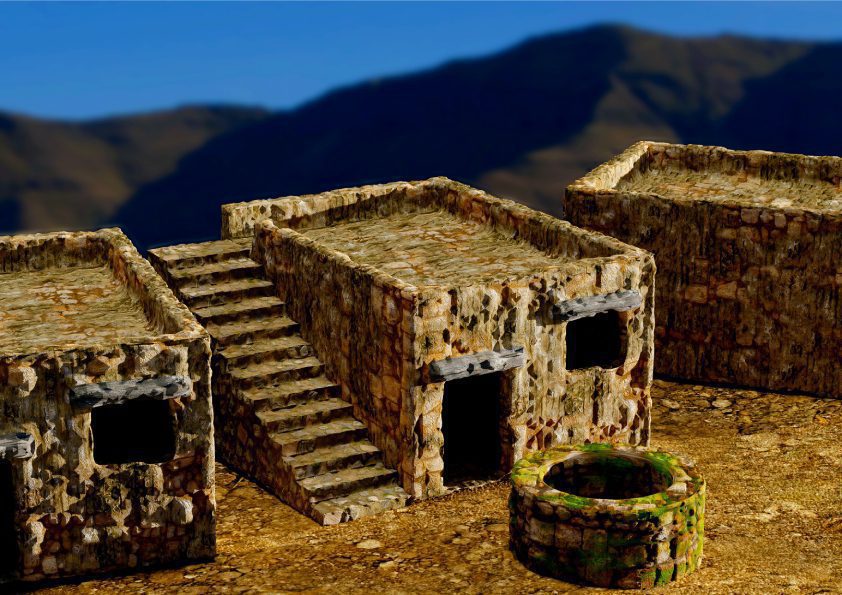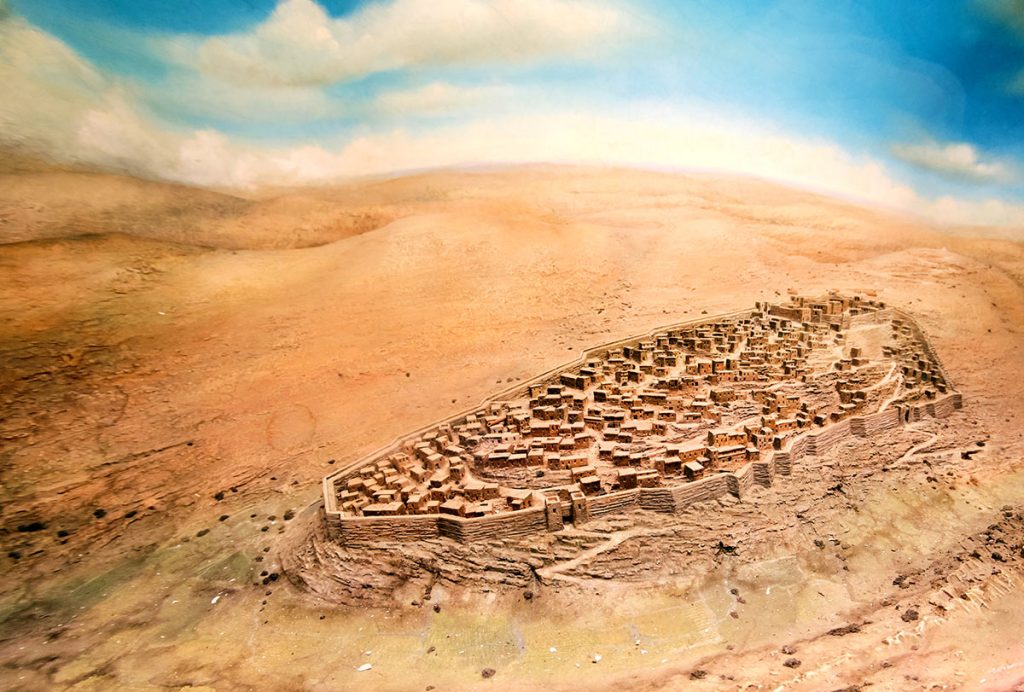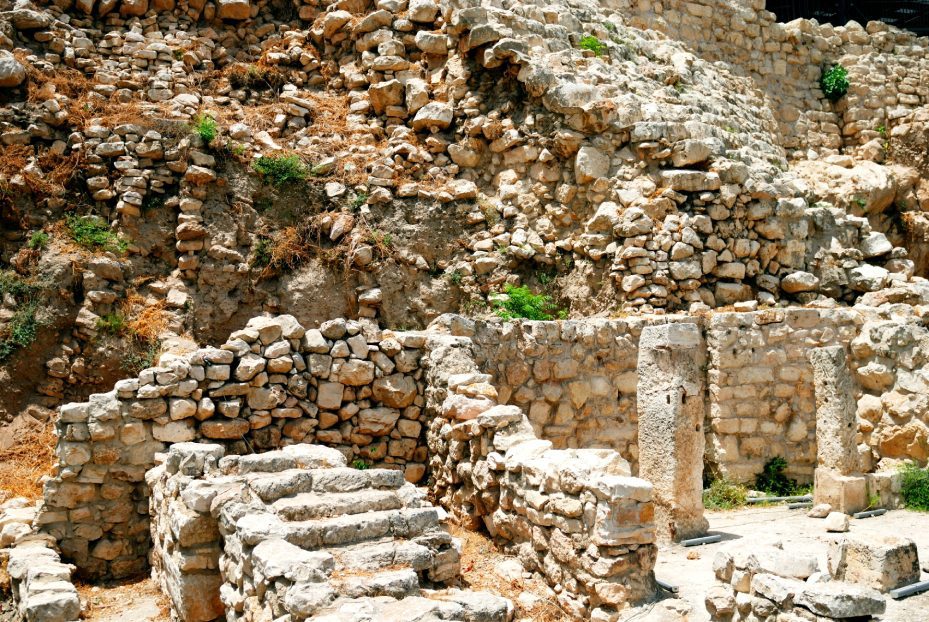A four room house is a typical Israelite house in the Biblical Period. When I am on a private tour and we are checking out a Biblical Tel. It could be the City of David in Jerusalem or Tel Megiddo. When we reach the Israelite Period (the Iron Age). You will probably find a four room house. Also known as an “Israelite house” is the name given to the mud and stone houses characteristic of the Iron Age. In fact, the house is dated to the Late Bronze Age. But what happened that later on the style was adopted by the first Israelites till it became a distinctive feature of the Israelite Period.

A MODEL OF THE HOUR ROOM HOUSE
The Meaning of the Name Four Room House?
The name comes from the fact that the ground floor of the building is divided into four sections. Although not all four are proper rooms, one often being an unroofed courtyard. It is also sometimes called a pillared house because two or all three of the parallel ground levels “rooms” are separated by one or two rows of wooden pillars. In some cases an upper floor was included, the inhabitants used it as living quarters. While the ground floor was used as a stable for livestock and for storage. This style dominated the architecture of Israel through the Iron Age II until the Babylonian Exile. After the destruction of Judah, the architecture type was no longer utilized.

AN ILLUSTRATION OF FIRST TEMPLE JERUSALEM WITH THE FOUR ROOM HOUSES
The Identification Of The Four Room House As An Israelite House
There are several indications that contributed to its identification as an Israelite house in the Iron Age. First, this form of construction is unique to the Land of Israel and to the period of time identified as the Israeli period – the 11th to 6th centuries BCE. Second, the locations at which such houses were found are distinctly characterized by additional identification marks; attributed to the population of the tribes of Israel. For example absence of pork bones at these sites (at sites identified as Philistines a particularly high percentage of pig bones were found; and at sites identified as Phoenicians – Canaanites the proportion of pig bones found was normal, i.e. typical of Europe at the time). Large urns identified with the Hebrew people – collar rim jars. Lack of addresses and captions.

THE RUINS AND THE STAIRCASE LEADING UP TO THE SECOND FLOOR OF THE FOUR-ROOM HOUSE (CITY OF DAVID)







